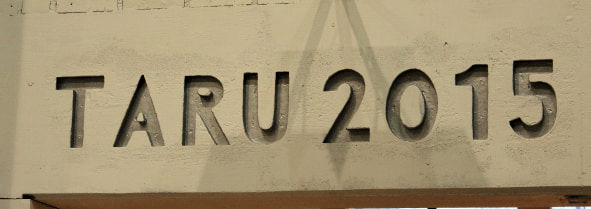Efficiency through living and breathing safety
Safety has seldom been seen as the main driving force behind modernizing a paper machine. This was the case at the Stora Enso Imatra Mills Tainionkoski board machine 5 (BM 5). Safety was one of the main targets in the project. Valmet delivered safer winder, transfer rails from reel to winder, and some measurements and controls for the board machine.

“There were just too many safety issues. The personnel had to work with moving rolls behind their backs,” Juha Finne, Installation Supervisor and Safety Delegate at Stora Enso Imatra Mills, describes the situation before the TARU project. “Safety is the number one thing at the Tainionkoski mill,” confirms Safety Delegate Jaakko Väärä.
The roll handling equipment from reel to storage needed a major safety improvement. There were no straight lines when it came to the logistics of moving parent or customer rolls; rolls were lifted with cranes and then lowered again and moved back and forth. The goal for the project was to improve safety in all operations, from reel to storage.
Safer and reliable winder
In some cases, modernizing an existing winder is a worthwhile option. Depending on the winder’s age and condition, modernizing offers a number of improvement possibilities.
In the case of Tainionkoski, the old winder was from the 1960s. A number of upgrades had already been done, but there was no reason to continue on this path because for one, the winder needed to be turned by 90 degrees, and the cost would have exceeded the benefits.
For Tainionkoski, a new winder turned out to be a more cost-effective option. Tommi Myller, Project Manager at Stora Enso Imatra Mills explains the decision: “Stora Enso Kaukopää has had this two-drum type of winder (OptiWin Drum) for 15 years, and it has been very reliable. In Tainionkoski, we thought that the basic winder needed to be reliable, and we wanted to add a number of automated functions to further increase safety and efficiency. Valmet presented many good references to make the decision easy.”
Valmet’s delivery included an OptiWin Drum two-drum winder, transfer rails from reel to winder, and some measurements and controls for the board machine. The winder was equipped with many automated functions e.g. automatic reel spool handling, a butt-joint splicer, tail threading devices, automatic set change, core feeding and taping equipment. “The whole package is highly automated. The winder works well,” Myller continues.
Safety turns into profit
”A major change in safety culture has happened in the last decade. Our customers are strongly pulling us along in the slipstream,” says Väärä.
The TARU project also included an order to estimate potential savings and make a payback calculation for the investment. Väärä explains that today the management seems to be more prepared to accept an investment with safety targets. “When one improves safety, there will most likely be more euros on the bottom line. It may take some time and money to teach safety to an organization. But when the processes are safe, efficiency will be improved and problems eliminated.” He continues: “When you get rid of safety deviations (near-miss incidents or accidents), production and working conditions improve.” In other words, efficiency and safety are related: safety turns into profit.

A safe modernization project
In the TARU project, safety was taken seriously. Not one worker could come to the site without mandatory, comprehensive safety training and a complete set of protective clothing and equipment. Any safety deviations were monitored regularly in weekly meetings. “Aiming for zero safety incidents” notebooks and safety guides were in use.
To get a safe machine that produces clean board that will be safe to use, it is necessary to cover all the safety aspects during the modernization project. You might think that if you take care of equipment safety and make sure it’s quite safe to move around the mill, you’re OK. That covers just the icing on the safety cake. Safety is about how the site is planned and scheduled, how people work together in a mill or a project, whether the equipment is safe and the final product safe to use, what kind of protective clothing people wear – and it all ends up how people behave.
“When it comes to safety, there were noticeable differences between different companies working in the project. Big companies stand out to their advantage,” states Väärä. “The image of Valmet and how Valmet worked here was all good,” he continues.
Safety in focus
In Valmet, safety is taken seriously. Safety is a complex issue. Equipment safety should also be divided into number of important sectors: mechanical safety, automation and process knowhow. Valmet has strong knowledge of all of these areas. Safety management, equipment safety and safety in projects and site operations must all be included in equipment modernization.
All Valmet-supplied safety related parts of the paper machinery must meet or exceed the performance levels required by the safety standards for paper machinery. Valmet has a systematic validation tool to make sure that all its components and equipment are safe. ”We can trust the safety of Valmet’s equipment: all the safety standards are taken into account in its designs,” Myller says.
